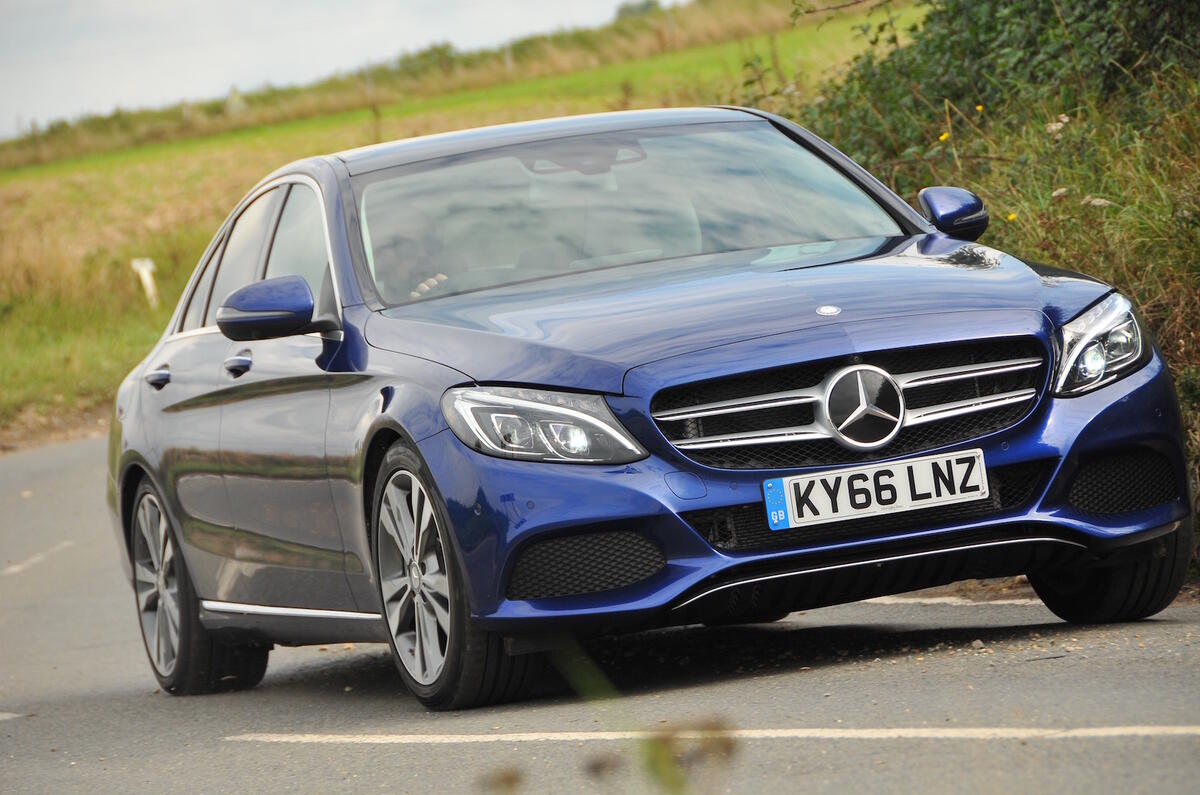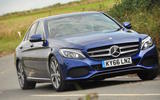What is it?
The Mercedes C 350 e is another reason to weigh up the advantages of plug-in petrol-electric hybrid power over a conventional diesel engine in your next compact executive saloon.
Those reasons have been mounting of late. Counting the Volkswagen Passat GTE, Volvo V60 D5 Twin Engine, Audi A3 e-tron Sportback and BMW ‘iPerformance’ 330e, there are now plenty of ways for benefit-in-kind tax-paying drivers to combine premium-brand ownership with a sub-50g/km electrified powertrain and end up in a faster and more efficient company car for a similar monthly outlay to that of a mid-range diesel. This youthful niche of the saloon market is now full of cars priced at considerably less than £40,000 in some cases and might even offer value to a private buyer with the right kind of usage in mind.
Like the recently road-tested Passat GTE and unlike the Volvo V60, the C 350 e features an electric motor mounted in line with the combustion engine and upstream of a seven-speed automatic transmission. With only 80bhp of electric power and 6.2kWh of battery storage, the C-Class offers less zero-emission power and range than most of its competitors.
That said, the Merc’s relatively healthy 208bhp turbocharged 2.0-litre petrol engine makes the C 350 e the only four-door PHEV of its kind capable of a sub-six-second 0-62mph time. So exactly what kind of upper-echelon mid-size Benz is this?
What's it like?
First and foremost, this car appeals because it’s a well-equipped C-Class at an attractive price. Available from just under £39,000, the C 350 e will actually cost you less than an equivalent 94g/km C300h diesel hybrid C-Class if you’re eligible for the UK government’s ‘ULEV’ grant for ultra-low-emissions cars. For fleet drivers the tax saving the car delivers should more than offset the slightly higher monthly contract hire. And to sweeten the deal further, Mercedes even throws in Airmatic air suspension as standard.
The car’s interior is expensive-feeling, pleasant and solidly hewn. The packaging of the drive battery takes a sliver of boot space away immediately above the rear axle but it hardly makes a difference to the car’s practicality in everyday use. Rear seats that fold 40/20/40 come as standard and passenger space front and rear is very competitive for the class, with room for bigger adults in the back.
To drive, the C 350 e makes for a better limousine than it does a sports saloon. There are several drive modes to choose from, but even in its Sport and Sport+ settings the car's steering feels a bit rubbery and leaden off-centre and the air springs can struggle to maintain flat, steady body control, or conjure much of a sense of connectedness with the road surface. Those air springs also make for noticeable road roar over coarse surfaces.
Despite the promise of hot hatchback-level performance, the C 350 e never really feels fast, and when animated that 2.0-litre turbo petrol engine isn't particularly keen to rev. But at lower crank speeds and less hurried rates of progress the motor is quiet and well isolated, and the automatic gearbox and electric motor work well together to effortlessly preserve forward momentum.
Mercedes quotes a zero-emission range of 19 miles with a full drive battery, but during our testing the C 350 e would cover only 12 miles, on a mix of town and country roads, before the petrol engine joined in. That isn’t great electric autonomy: a Passat GTE will easily double that, as will a Mitsubishi Outlander PHEV.

























Join the debate
Add your comment
Too many problems
I bought a C350e sport nearly new in September 2017, 8,000 miles. Have done little more than average motorway mileage since, now 60,000. 1st problem, starter motor worked loose just outside warranty and not long after MB official service resulting in juddering. Replaced at cost near 800. 2nd problem, poor fuel economy nothing like ambitious figure MB claim. 3rd problem, Air suspension compressor has just failed and must be replaced. Cost 720 plus VAT plus labour, approx 1200. 4th problem, I cant get rid of it fast enough.
Is this available in US
This car is dangerous and should be recalled
The car has been with Mercedes for the last 3 weeks while they try and work out what is wrong with it.
Additionally the wiring loom in the car was replaced after 3 months, at the time Mercedes told me they had done that to 40% of the cars sold in the Netherlands. Advertised fuel economy is also nowhere near the manufacturer's claims, actually worse than a petrol variant of the same car without all the 'hybrid' technology.
Mercedes should recall all of these cars and fix the safety fault before someone dies.